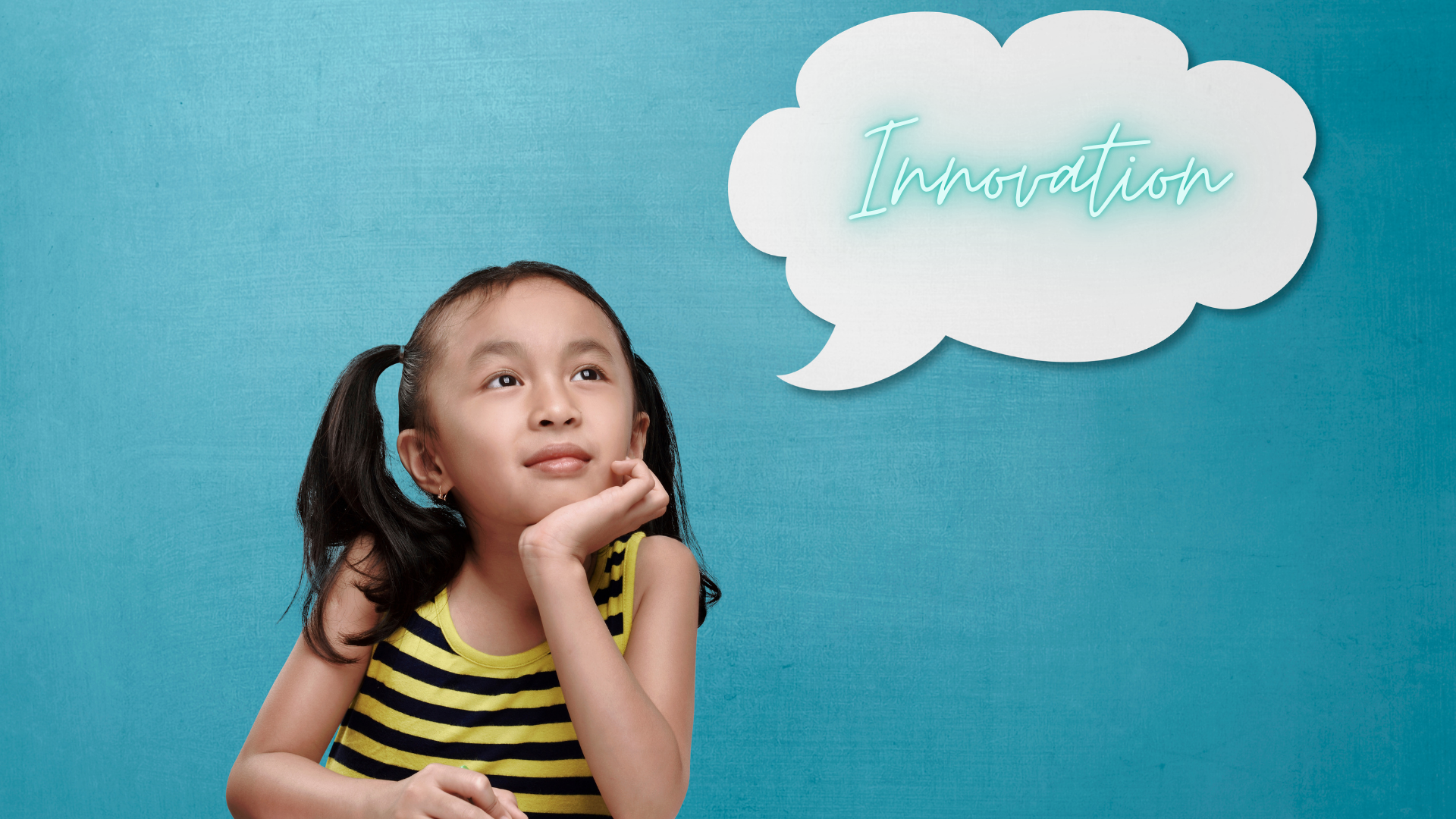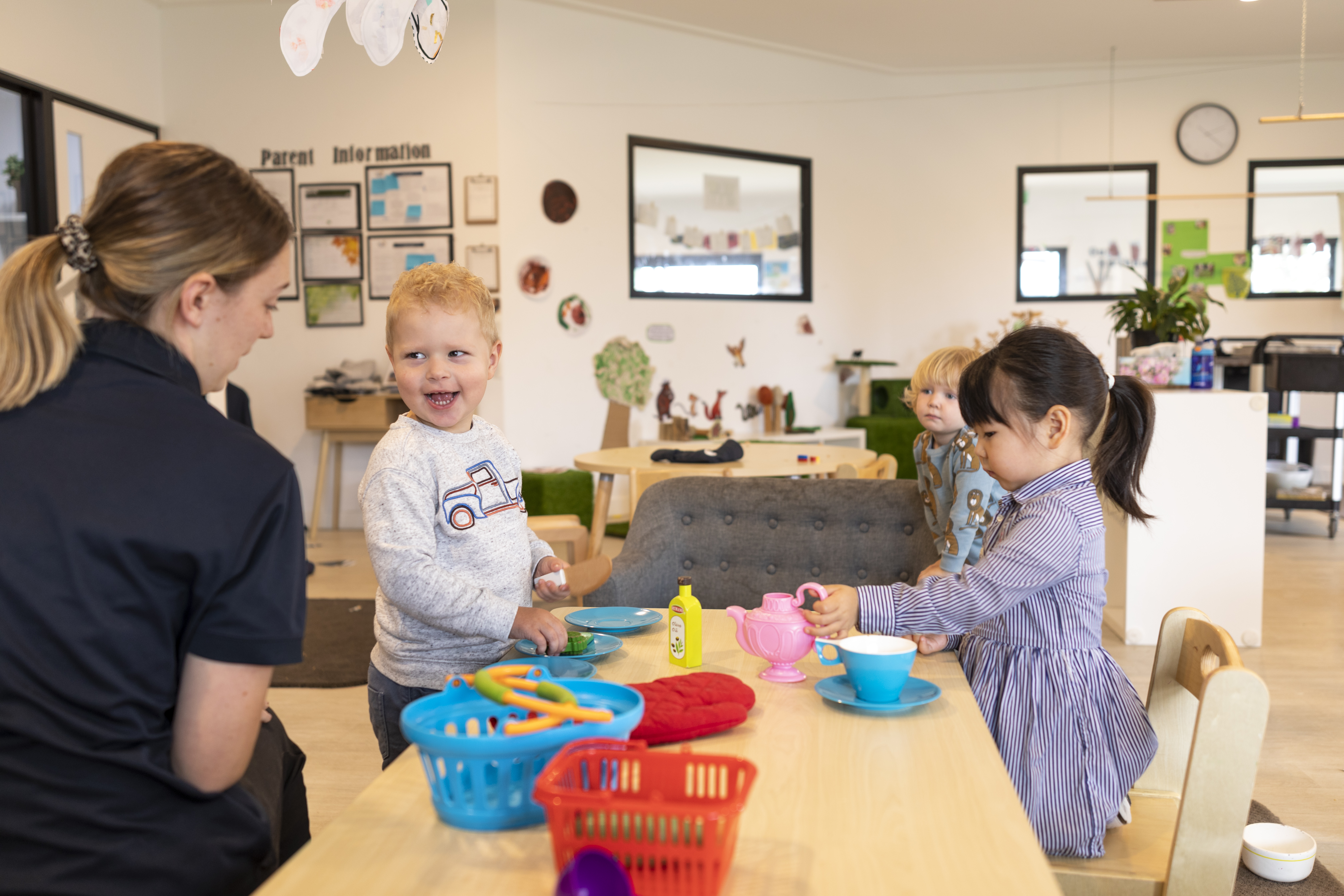Innovation and Why It Matters in the Early Years Landscape
Innovation. It’s a word we hear all the time, but what does it really mean when it comes to early years education, care, and development? What does it look like and why does it matter? If you find yourself asking these questions, then you’re not alone.

Although innovation has become a cornerstone for advancing positive change in the early years landscape, it’s still a mystery to most, often misunderstood or confused with simple yet ambiguous terms like “improvement” or “reform”.
This article aims to demystify innovation, bust some myths underpinning it, and explore why it is essential for those in this space and for our little learners who we care for everyday! Keep reading to find out more about innovation’s profound impact on the cognitive, social, and emotional development of young children, as well as its broader significance for the early years landscape.
What Constitutes “Innovation” in the Early Years?
First off, let’s clear the air. Innovation isn’t just about fancy new technologies or trendy teaching methods. It’s about creative, fresh approaches that transform how we support, engage with, and teach our children. Think beyond the usual tweaks and improvements – innovation is all about revolutionary ideas that change the game in early childhood settings.
Is “Innovation” Different From “Invention”?
One of the biggest misconceptions about the term “innovation” in Early Childhood Education and Care (ECEC) and Early Childhood Development (ECD) is that it always means creating something new and original. This is only partly true. While innovation can involve the creation of something entirely from scratch – be it an idea, product, process, or otherwise – “invention” is the more accurate term for this practice. An “invention” is a product or process that has been imagined and generated for the first time. Innovation, on the other hand, can also be about building upon existing knowledge and technologies.
Think about it this way: it’s like the difference between upgrading your old car to a faster, sturdier model versus inventing a brand-new mode of transportation. Invention is the latter whereas innovation encompasses both – it can be groundbreaking and extraordinary, or it can be incremental, building on what already exists.
No matter the form it takes, innovation is always generated in response to a complex challenge that many early years system stakeholders, such as children, families, communities, and the workforce are facing.

Why is Innovation Particularly Crucial During the Early Years?
The early years are a magical time of rapid growth and development. Children are like little sponges, soaking up everything around them. Innovation during these formative years can set the stage for lifelong learning and success. It’s not just about keeping up with the times – it’s about giving our children the best possible start.
In this manner, innovative practices can supercharge all areas of a child’s development. For example, studies show that innovative, play-based learning environments can significantly enhance cognitive development, social interaction, and emotional resilience in young children (Whitebread et al., 2019; Hirsh-Pasek et al., 2015). New innovative tools and environments spark children’s curiosity, encourage problem-solving, and build social skills. Imagine classrooms and outdoor spaces where learning feels like an adventure, where children are excited to explore, and where every child feels included and valued. That’s the power of innovation!
Why Does Innovation Matter to the Early Years Workforce?
For the dedicated adults working in these early years spaces, innovation is the secret sauce that makes day-to-day experiences with young children and their families magical. Cutting-edge tools and creative strategies that make learning fun, inclusive, and engaging for every child enable the workforce supporting them to do their jobs more holistically and effectively. Research shows that when early years settings embrace innovative practices, it doesn’t just benefit the children; it transforms the entire ecosystem. Early Years Educators (ECEs) and Teachers (ECTs) feel more confident and capable, families are more engaged, and most importantly, children thrive in environments that are responsive to their individual needs and the ever-changing world around them (OECD, 2019).
For the workforce, innovation also fuels professional growth, offering new resources, processes and skills to navigate and adapt to the complexities of early childhood development. By staying at the forefront of educational practices, early years professionals can tailor learning experiences to better meet the needs of each child, fostering creativity, critical thinking, and resilience from the start. Put simply, innovation can give the workforce the resources and support to do what they do best—nurture the potential in every child.
How Can Families Relate to Innovation?
For families, innovation can bridge the gap between home and educational settings, ensuring that learning is a seamless, collaborative process. Innovation means their voices are heard and integrated into their child's learning journey. Engaging parents and caregivers in innovative practices—such as using AI-driven apps to track developmental milestones or incorporating interactive storytelling platforms—can enhance their involvement in their child's education, making them active partners in the learning journey from the get-go. Research shows that when families are involved in innovative early learning approaches, children tend to show improved social-emotional development and academic outcomes (Sheridan et al., 2010; Epstein, J. L., 2011). In essence, innovation in the early years isn't just a nice-to-have; it's a must-have for creating unforgettable early years experiences for children and their families, and a future-ready generation of lifelong learners.

What Long-Term Benefits Can Result from Innovation in the Early Years?
The benefits of early years innovation stretch far and wide. Children who experience innovative education and care are often better prepared for future academic challenges (Melhuish et al., 2008). They’re adaptable, creative thinkers and problem solvers who can navigate the complexities of the world with confidence. Plus, they develop strong emotional and social skills that help them thrive in all areas of life both now and in the future. Indeed, longitudinal studies have found that children who attend high-quality, innovative early childhood programs show improved academic performance, higher graduation rates, and greater career success later in life (Heckman, 2011). For parents and caregivers, this means fewer worries down the road and a greater likelihood of seeing their child thrive in school and beyond.
For the workforce, embracing innovation isn’t just about staying current or on top of the busyness of the day-to-day—it’s about shaping the future. ECEs and ECTs who adopt forward-thinking practices are better equipped to meet the diverse needs of the children they serve, fostering a more inclusive and adaptive learning environment. This is especially significant given the increasing rate of identification of children presenting with additional needs (AIHW, 2024). Over time, this leads to a more able and capable workforce, ready to tackle the challenges of a dynamic educational landscape. Plus, as the workforce grows and adapts through innovative approaches, they often experience increased job satisfaction and professional fulfillment, contributing to a more stable, motivated and retentive collective.
Conclusion
Innovation in the early years isn’t just a buzzword – it’s a necessity. By embracing new ideas and approaches, we can create a learning environment that truly supports and celebrates every child. Ultimately, the long-term benefits of innovation in the early years extend far beyond the classroom. They can create a foundation for lifelong learning and success for children, families and the supportive early years workforce.
Understanding the potential and scope of innovation helps us unlock endless possibilities. It’s about thinking outside the box and embracing new ideas that cater to the diverse needs of our children across Australia. When we get innovative, we can open doors to more engaging, effective, and inclusive early years experiences.
So, let’s get innovative and make the early years as magical and impactful as they can be!
Stay Tuned For More...
This article is the first in our “Food for Thoughts” series on innovation in the early years landscape. In the coming months, we’re going to dive deep into exciting topics like Artificial Intelligence (AI) and linked data, innovation and inclusion, service quality and accessibility, and so much more. Our aim is to provoke thought, generate discussion, and inspire collaborative action in the name of innovation for purpose across the early childhood sectors.
So, get ready to feast on more bite-sized, thought-provoking content that will spice up your perspectives and fuel your appetite for innovation in early childhood. We can’t wait to serve up these deliciously transformative ideas and topics with you!"
What Do YOU Think? Share Your Thoughts With Us!
Do you have thoughts on this article? Share your feelings and experiences in the comments section below. Don’t forget to stay tuned for more articles on how we can continue to innovate in the early years landscape! Let’s keep the conversation going and work together to create a brighter future for our youngest learners.
Kate Oubridge-Egan – Innovation Lab Manager, The Front Project
Resources:
Whitebread, D., Kuvalja, M., & O'Connor, A. (2019). The importance of play. In The Routledge International Handbook of Early Childhood Play (pp. 125-135). Routledge.
Hirsh-Pasek, K., Golinkoff, R. M., Berk, L. E., & Singer, D. G. (2015). A mandate for playful learning in preschool: Presenting the evidence. Oxford University Press.
OECD. (2019). Providing Quality Early Childhood Education and Care: Results from the Starting Strong Survey 2018. OECD Publishing.
Sheridan, S. M., Knoche, L. L., Edwards, C. P., Bovaird, J. A., & Kupzyk, K. A. (2010). Parent Engagement and School Readiness: Effects of the Getting Ready Intervention on Preschool Children's Social-Emotional Competencies. Early Education and Development, 21(1), 125-156. doi:10.1080/10409280902783517
Epstein, J. L. (2011). School, Family, and Community Partnerships: Preparing Educators and Improving Schools. (2nd ed.). Westview Press.
Melhuish, E., Phan, M. B., Sylva, K., Sammons, P., Siraj-Blatchford, I., & Taggart, B. (2008). Effects of the Home Learning Environment and Preschool Center Experience upon Literacy and Numeracy Development in Early Primary School. Journal of Social Issues, 64(1), 95-114.
Heckman, J. J. (2011). The Economics of Inequality: The Value of Early Childhood Education. American Educator, 35(1), 31-35.
Australian Institute of Health and Welfare (AIHW). (2024). People with disability in Australia: Engagement in education. Retrieved from https://www.aihw.gov.au/reports/disability/people-with-disability-in-australia/contents/education-and-skills/engagement-in-education
